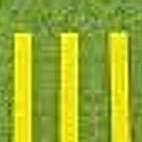Make Or Buy A Calibrated Row-Fertiliser-Applicator
-
Recently Browsing 0 members
- No registered users viewing this page.
Announcements
-
Topics
-
-
Popular Contributors
-
-
Latest posts...
-
8
Cataract surgery in Pattaya or surrounding area
I had it done 15 years ago at BKK Pattaya and my wife had it done 2 months ago. The charge for her was 200K maybe there was a special on, but I do not recall there being one. We live in Issan and you can get this done a lot cheaper there-- but with several of my friends who have had it done here, had problems -2 have even gone back to wearing specs again. I am not a fan of BKK Pattaya but for this eye opp they are very good-- the price includes overnight stay where they wake you every hour to clean and put drops in. The surgeon that has been there for years "Sumchai" and studied it in Germany has recently retired (last month) maybe thats why the increase. -
48
Report Navy’s New Submarine to be 'Completed Within the Next 3 Years'
I wonder if this one will have an engine -
12
Toyota’s hidden engine has been unveiled
BMW has been dabbling in H2 cars for the last 45 years. About 25 years before China thought of electric ones. -
235
‘Putin clearly won’: Pundits say meeting was ‘bad for Americans’
Well, let's hope Zelensky is prepared this time. Zelensky punches Trump.mp4- 1
-

-
1
Virologist network reaffirms support for mRNA vaccine platform
Prevented millions of deaths? Estimated? As in computer modeling. Covid vaccines were/are a fantasy. How can they get away with this monumental nonsense? 94% effective? What utter tripe. They were 0% effective.- 1
-

-
97
Video 20 Foreigners Assault Thai Shop Owner in Phuket Dispute
The news always used to be about farangs stabbed by Patong tuk tuk drivers for refusing to pay exorbitant fares or being totally shafted over jet ski scams with cops siding with the scammers to demand 40k baht for pre-existing dents and scratches. What has happened to make the tourists rise up and turn the tables on the Thai scammers?
-
-
Popular in The Pub


.thumb.jpg.3ee24d9400fb02605ea21bc13b1bf901.jpg)










Recommended Posts
Create an account or sign in to comment
You need to be a member in order to leave a comment
Create an account
Sign up for a new account in our community. It's easy!
Register a new accountSign in
Already have an account? Sign in here.
Sign In Now